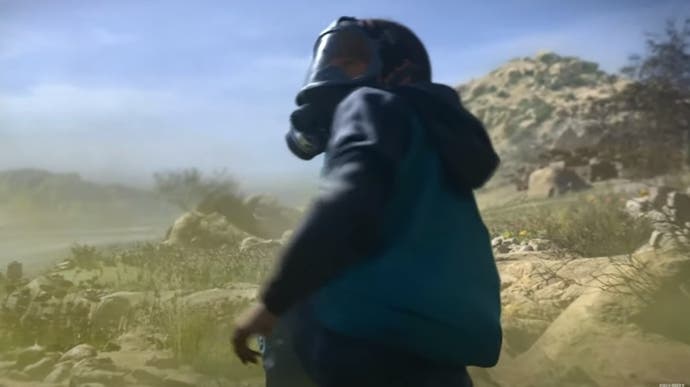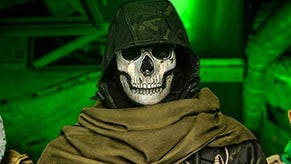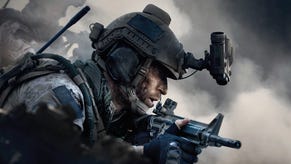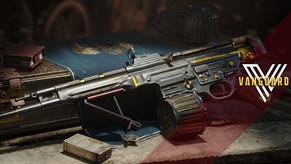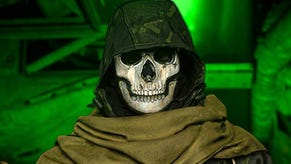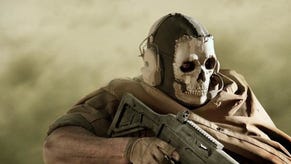Call of Duty: Modern Warfare and the problem with its child soldier level
"Jaws not Saw."
On Call of Duty: Modern Warfare's announcement day, I was excited. Not just for the usual reasons, but because this instalment promised to tackle some seriously mature topics. Articles were published describing a terrorist attack in London, civilian collateral damage, situations ripped "straight from the headlines" and a particularly challenging child soldier level.
It sounded like a recipe for controversy, sure, but also an opportunity for something a bit different.
I'm a great believer in the potential of war games to provide genuinely interesting commentary on conflict. This is to the extent I wrote a bonus dissertation analysing how This War of Mine and Spec Ops: The Line critique the complexities and horrors of war. Yes, I'm a nerd.
Call of Duty has itself presented several memorable levels which question certain military methods, such as the original Modern Warfare's Death From Above: the AC-130 level which required players to use thermal imaging to explode white dots on a map. The dots, of course, are people - but then it's hard to remember that from a distance, and when you're receiving so much praise over the mic for shooting them.
In short, I went into Modern Warfare's behind-the-scenes E3 demo with genuine anticipation. My expectations were raised again when we were promised the game would "push the boundaries of the medium" and provide "emotional connection through uncomfortable realities of war".
That discomfort did eventually arrive - but for all the wrong reasons.

Things started off pretty well: we were shown the end of the Piccadilly mission, which presented a confused situation where police and the army were attempting to prevent a terrorist attack. Ultimately, a bomb sets the area ablaze - an echo of the devastating failure in the original Modern Warfare mission Shock and Awe.
The action then moves to the Townhouse mission, where a crack team of SAS troops is undertaking a stealth operation to disrupt the terrorist cell responsible for the attack. While the emphasis on avoiding civilian collateral damage sometimes feels heavy-handed, the level is still a good exploration of the way terrorists are embedded within civilian communities. It's claustrophobic, stealthy and brutally efficient. The wriggling animations and choking noises made by the terrorists once you've downed them - even though you know they would have killed you - still make you feel like a monster. An obvious point on the difficulties of making snap decisions in combat is drawn using parallel situations: on one floor, the player encounters a woman holding a baby (who you're supposed to restrain rather than kill), on the next, a woman insists she's being held hostage... until she reaches for a detonator.
So far, so good - but then it was time for the child soldier level.
The first thing the player sees is the face of a dead woman. That's Farrah's mother - the young girl you're playing who's been caught in the middle of a Russian bombing campaign on her Middle Eastern city. The sensation of being slowly rescued from a tomb of rubble and dust - with sparks flying towards your face as a saw is used to cut you free - is once again claustrophobic and panic-inducing. Picked up in the arms of her father, Farrah is carried away while screaming for her mother amidst the full chaos of an attack. It's as horrible and harrowing as it should be.
Farrah and her father reach the house, reunite with her younger brother, and head for the exit. Unfortunately fate has other plans, as a Russian soldier arrives at the door. After a tense stand-off, Farrah's father gets shot in the struggle, and the two kids scramble away to hide.
This is when things get really weird.
Farrah finds a screwdriver on the floor, and in order to take down the hulking Russian, the player must sneak up to the back of his legs and slice his thighs. This doesn't happen just once - it takes three attempts to down him. After each slice, Farrah must dart away to hide under a bed, or sneak between rooms using air vents. The strangeness of the situation is compounded by the Russian's lumbering pathing, almost comical accent ("Look at vat you did to my leg, bitch"), and the repetitive gun-shooting noise and animation that goes off every time Farrah takes a chop at the soldier. At the end of the third hack-and-slash attempt, Farrah and her brother work together to repeatedly stab the soldier in a gory, protracted and drawn-out death sequence, with Farrah finally finishing him off with a gun - the camera spinning upwards with the force of the recoil in a child's hands.
If Infinity Ward wanted me to be uncomfortable, it succeeded - but only because this scene felt so jarring and awkward. The reason for this, I feel, is because the child soldier level snaps from on-the-rails cinematic scenes to a weirdly cliché, very video games boss fight. It's even split into two stages - the first being a bizarre game of hide-and-seek where the player crawls through air vents (classic video game fare), and then follows the rule of three by requiring players to hit the "boss" three times. The second stage is a slightly more cinematic "finisher move" where you stab the Russian about five times in the chest, and then finally kill him with the gun.
Despite Infinity Ward's continued emphasis on achieving realism, this level didn't feel real at all. The use of tired video game grammar was so obvious that it shattered any suspension of disbelief, trivialised the situation, and cut through what should have been an intense and harrowing moment.

I wanted to hear what Infinity Ward had to say about its approach, so during the round table I asked studio art director Joel Emslie and single-player design director Jacob Minkoff some questions about Modern Warfare's presentation of political themes and sensitive topics.
"We want to make a game that is true to the spirit of modern war and modern conflicts, but we don't want to speak to any specific political message", Minkoff told me. "What this is is a piece of entertainment."
Similarly, Emslie said Infinity Ward is "more interested in telling a really good story".
"We have a saying at the studio 'Jaws not Saw', and we're absolutely mindful of being respectful to people and what they've gone through," Emslie explained.
"This is supposed to be fun, it's supposed to be a first-person shooter, you're supposed to have a good time with it," he later added. "We don't want to drag you down into a state, so we're very mindful of going more Jaws.
"I'm a huge fan of Tarantino - I think that he deals with very extreme content in an artful way, and we're always trying to take the artistic approach to telling a tale and being cinematic.
"Ultimately it's a piece of entertainment, it's art."
Listening to these answers, I think it's possible to identify why the child soldier scene feels so off. Modern Warfare wants to be an emotional experience whilst providing entertainment and avoiding overly-gratuitous violence, hence that phrase "Jaws not Saw". I think this is achievable - as I mentioned previously, the original Modern Warfare does it brilliantly in Death from Above. But in the child soldier level Infinity Ward is too eager to do both things at once, pushing inappropriate and obvious game mechanics along with over-dramatised violence. In seeking to make the level both cinematic and engaging in gameplay terms, Infinity Ward stumbles on its own video game grammar - and instead creates a Frankensteinian, dissonant mess.
